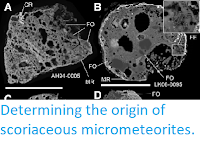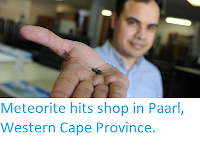A meteorite has been stolen from the Science Museum of Virginia in Richmond. The rock, which was contained in a metal stand in an exhibit on the museum's first floor was removed some time between 9.30 am and 2.30 pm on Thursday 15 March 2018, by a thief who apparently used some sort of tool to partially dismantle the stand. Virginia Capitol Police are seeking the perpetrator of the crime, however the item, a nickel-iron meteorite about the size of a tennis ball, may be hard to dispose of, as it is not particularly uncommon, giving it a low value (about US$1500) and a limited number of potential buyers. The museum expects to be able to replace the meteorite cheaply and within a few days.
A meteorite that was stolen from the Science Museum of Virginia on 15 March 2018. Virginia Capitol Police.
Nickel-iron meteorites, or octahedrites, are the most common class of meteorite, being comprised largely of iron with a substantial amount of nickel, leading to the formation of the mineral kamacite, which has an octahedral form, giving these meteorites their name. Strictly speaking iron meteorites are less common than stony meteorites, but they are much more commonly found as they are resilient both to atmospheric entry and terrestrial weathering, and relatively easy to recognise. Only about 5.7% of objects entering the atmosphere are thought to be iron meteorites, but they comprise about 90% of objects in collections. Nickel-iron meteorites are the most common form of iron meteorite, though low-nickel meteorites hexahedrites, are also found. Both are thought to have formed within the interior of large planetesimals in the early Solar System. These bodies were large enough to develop differentiated iron cores (as is seen in the Earth today), but which were subsequently torn apart by tidal forces generated by the larger planets.
Anyone with information on the crime can contact the Virginia Capitol Police on (804) 786-2120.
See also...
Anyone with information on the crime can contact the Virginia Capitol Police on (804) 786-2120.
See also...
Follow Sciency Thoughts on Facebook.







